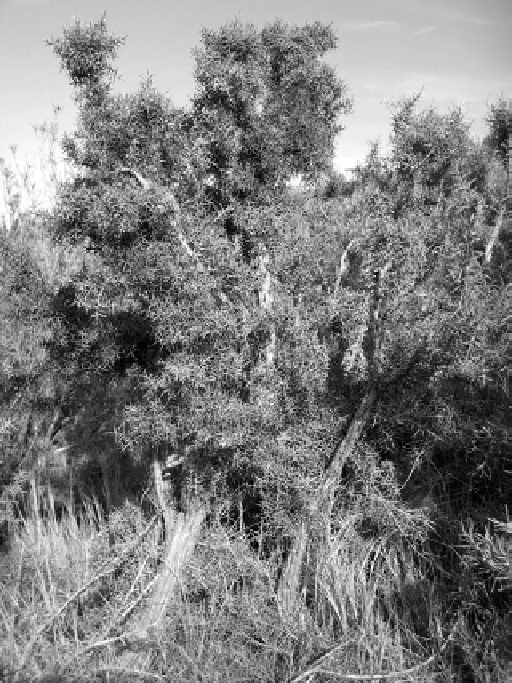Agriculture Reference
In-Depth Information
Fig. 4.5
Ulex parviflorus
(Fabaceae), a postfire obligate seeding species that accumulates a
large amount of fine and dead fuel. Although not apparent in black and white, most foliage is
dead and live biomass is restricted to the branch tips. (Photo by Juli Pausas.)
fuel loads may be very high, reaching over 100 Mg ha
1
in some Portuguese
shrublands (Viegas
et al.
2002
). In contrast, in the eastern part of the basin, we find
communities overgrazed for centuries and with a long annual dry period; conse-
quently they accumulate much less biomass (e.g.
Sarcopoterium spinosum
or
Phlomis
fruticosa
shrubland; Dimitrakopoulos
2002
). In rugged and protected areas, where
evergreen oak forest is still present, biomass accumulation is often over 100 Mg ha
1
and can reach over 200 Mg ha
1
(
Quercus ilex
forest, including stems; Lledo´
et al.
1992
;Ib
´
n˜ ez
et al.
1999
), although only a small fraction is consumed by wildfires.
Some of the species in the shrublands accumulate a large proportion of dead
biomass (which has profound impacts on fire behavior, see
Chapter 2
). For
instance, most of the biomass in
Ulex parviflorus
occurring in coastal areas of
Spain and southern France corresponds to very fine fuel; in a 9-yr-old community
(
Fig. 4.5
), standing dead biomass may account for more than 50% of its total
biomass (Baeza
et al.
2006
, 2011). Similarly,
Erica
-
Cistus
shrublands of central
Spain include
c
. 40% of dead biomass, and 30% of the green biomass is fine fuel

